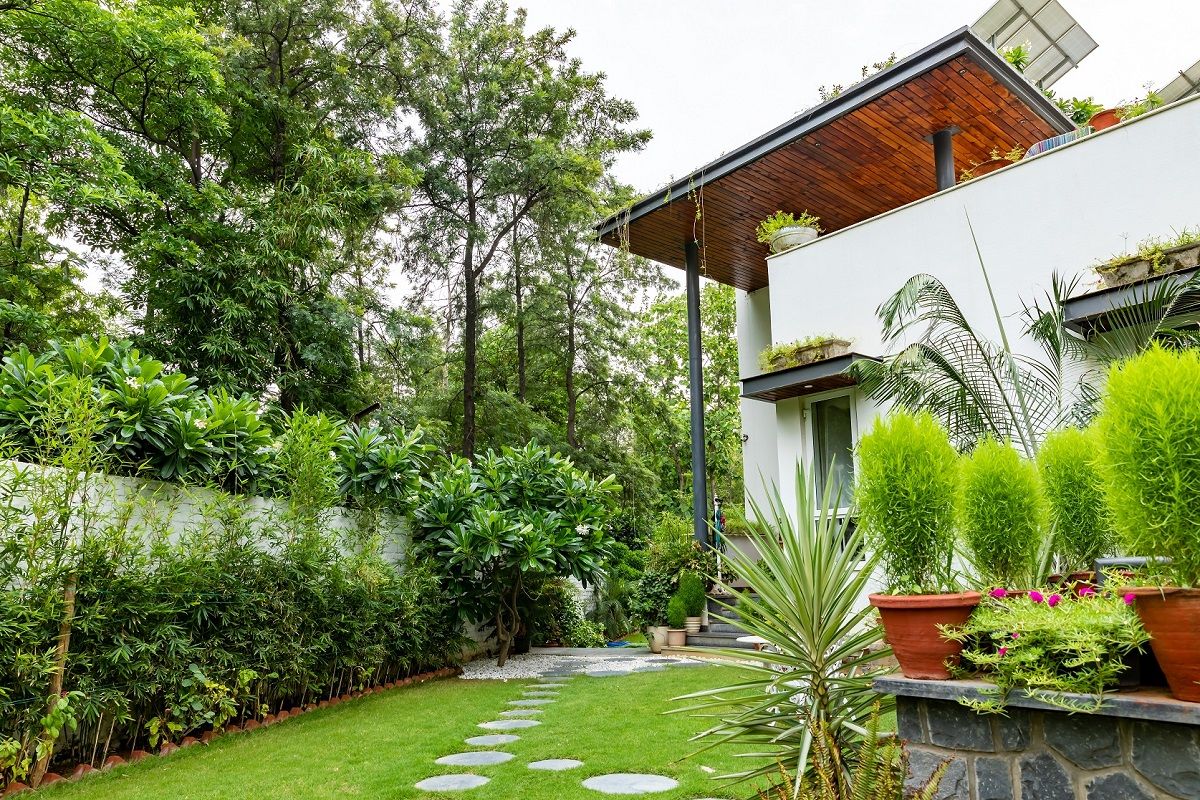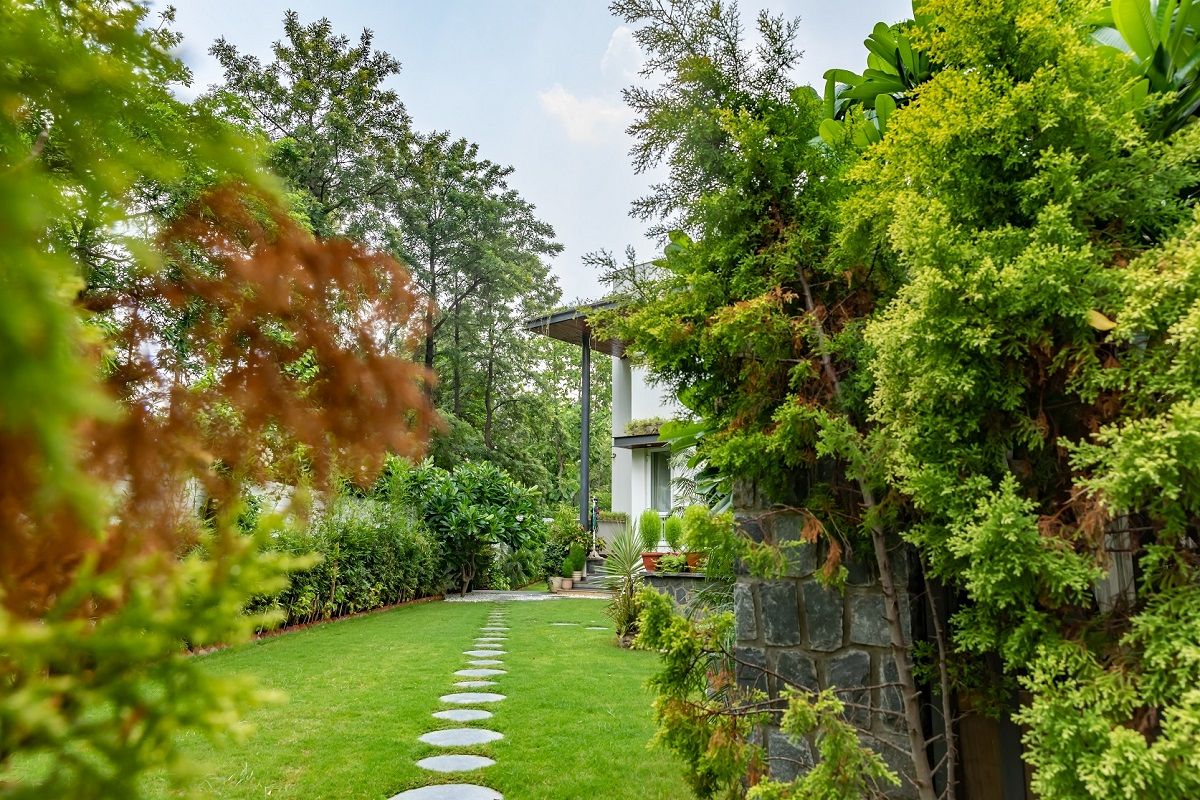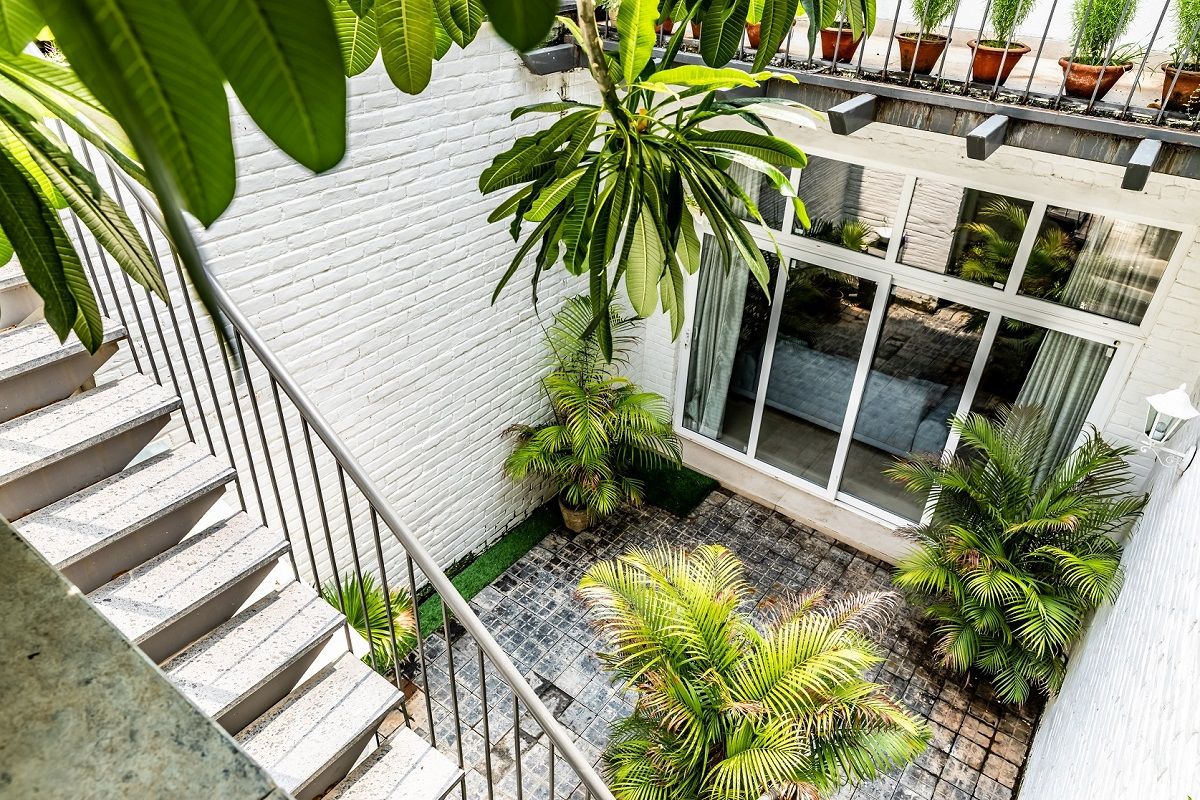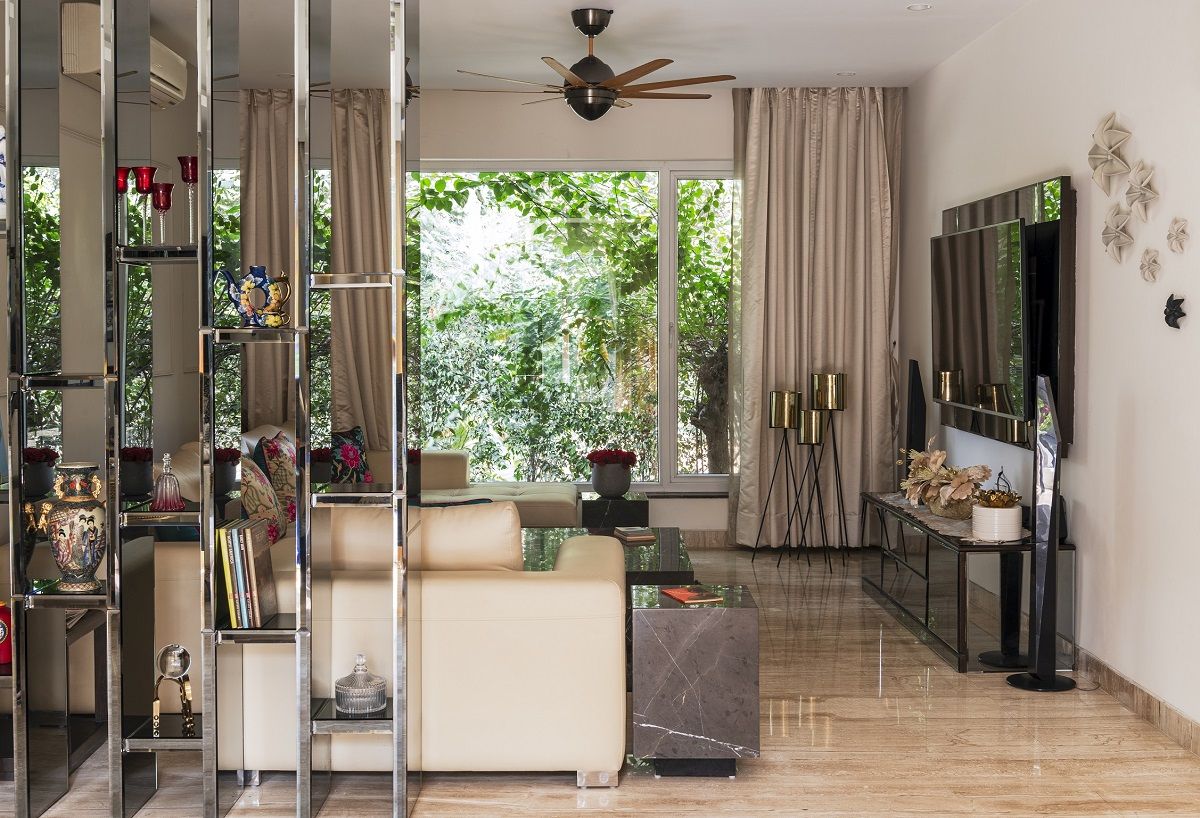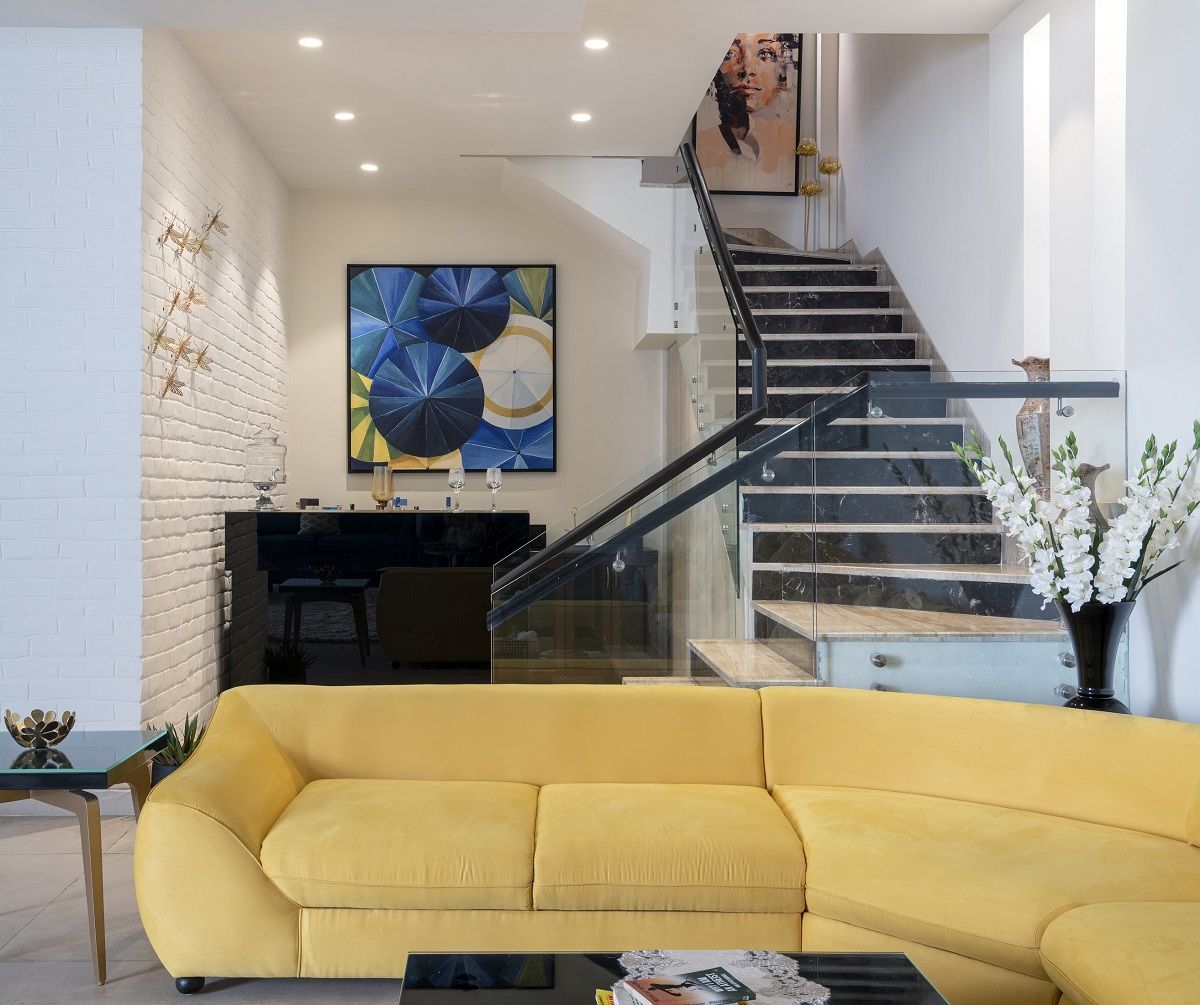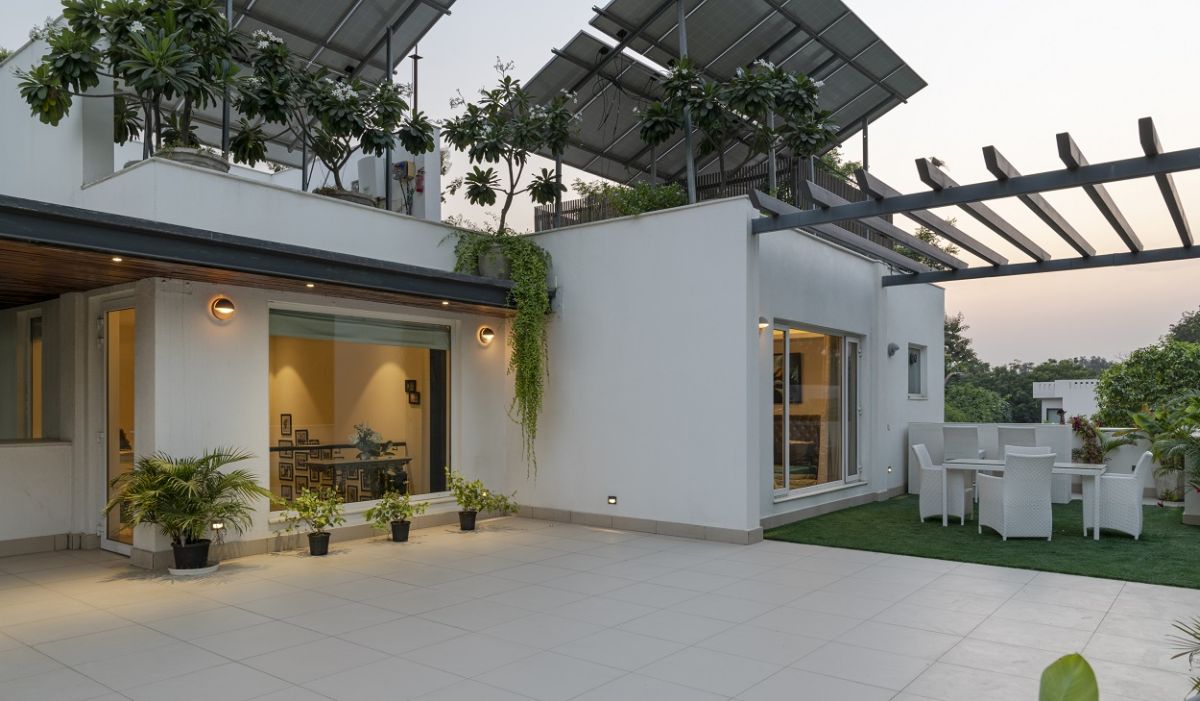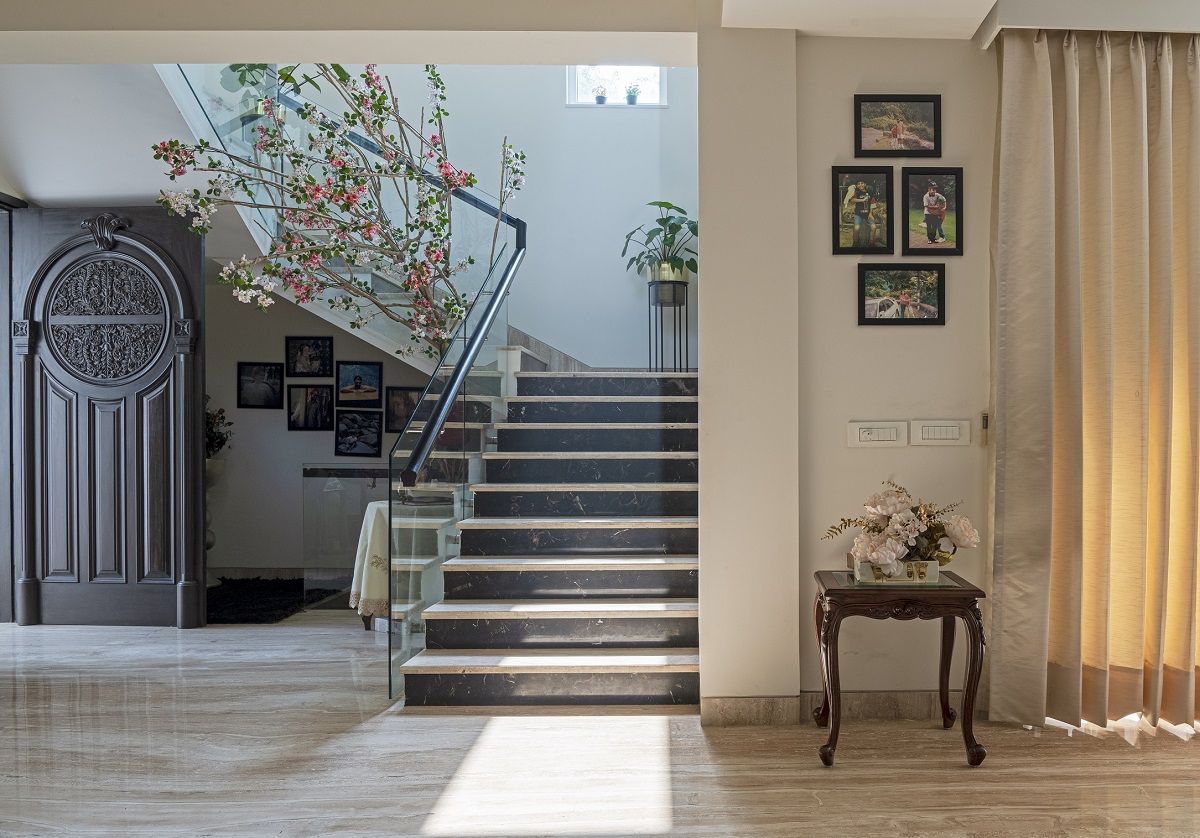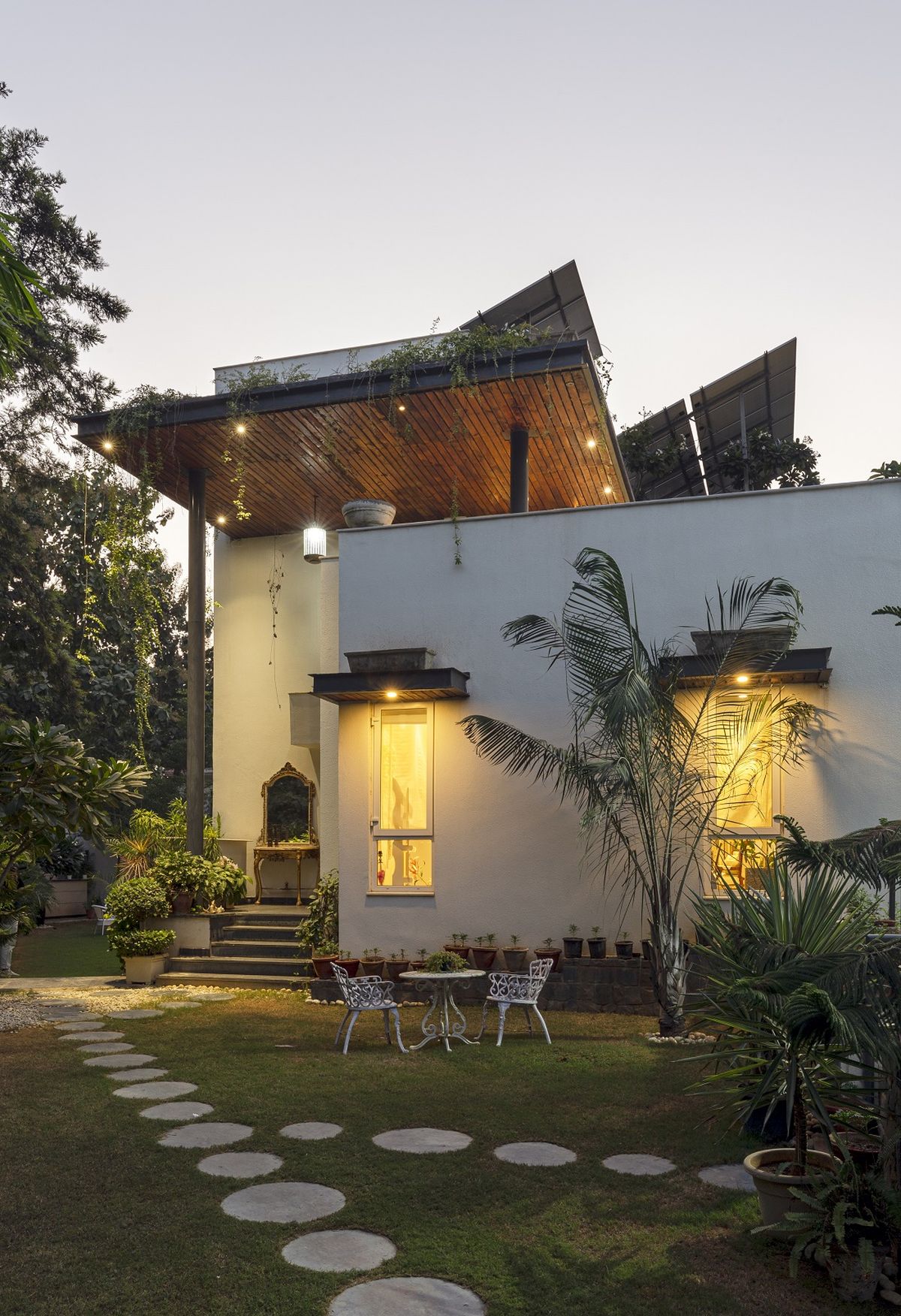Ansal Villas, a house designed for a family of four is nestled among sprawling farmhouses in Chattarpur, New Delhi. Considering the site constraints, the house is designed to offer complete justice to its surroundings while simultaneously adhering to a crisp client brief— “a house that is surrounded by a green footprint.”
With a reasonably tight budget, the material palette of the house is kept minimal, which explains the pared-back aesthetic of the house. Externally, the structure is treated with simple white external paint, stone finish and green pockets. Internally, the openness of the house and simple finishes offer a sedate and modern look.
A visit to Ansal Villas is like a walk in the park. A house that proves that minimalism, green vistas and white hues are all you need to design a timeless abode. Nestled inside a plot of land enveloped by greenery, this charming modern farmhouse is a perfect getaway from the perils of city life.

